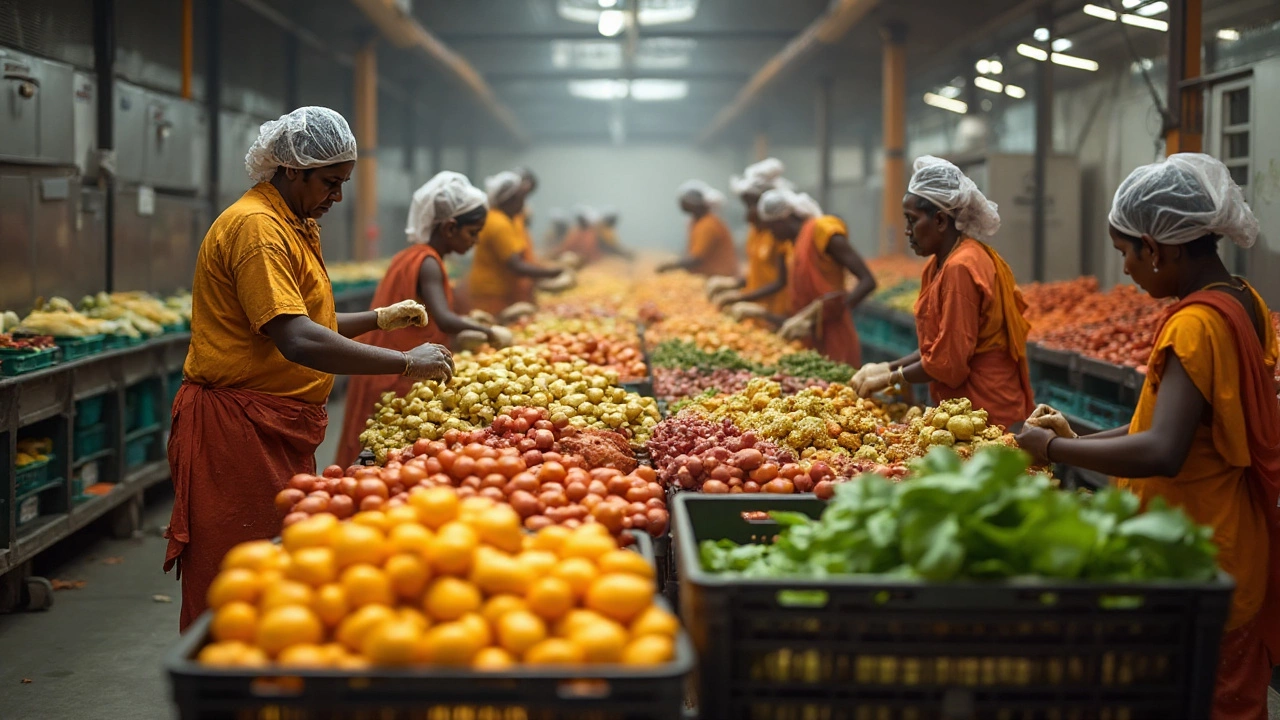- Is AbbVie owned by Abbott? - Unraveling the corporate link between two pharma giants Oct 20, 2025
- Easiest Manufacturing Businesses to Start: Real-Life Ideas That Work May 20, 2025
- The 5 Essential Stages of Food Processing Explained Oct 12, 2025
- Top Car Brands Manufactured in India: The Complete 2025 Guide Aug 4, 2025
- Which Country Leads the Electronics Industry? A 2025 Comparative Guide Oct 9, 2025
Food Industry Sectors: What Drives Growth and Where to Focus
If you’re wondering why the food market feels so big and varied, the answer is simple – it’s split into several distinct sectors, each with its own rhythm. From snacks that sit on pantry shelves to fresh dairy that leaves the plant daily, every slice of the market follows a pattern you can tap into.
First off, the processed food sector dominates the scene. Companies turn raw ingredients into ready‑to‑eat meals, snacks, and canned goods that travel long distances. This part of the industry thrives on scale, low‑cost sourcing, and automation. That’s why you’ll see giant plants in Gujarat and Tamil Nadu churning out chips, sauces, and ready‑made curries.
Next up is the beverage segment – think sodas, juice packs, dairy drinks, and the fast‑growing plant‑based milks. The key here is flavor innovation and packaging that looks good on a fridge door. Brands that keep the taste fresh and the shelf‑life long win big.The dairy sector stays close to home. Milk, cheese, yogurt, and butter move quickly from farm to fridge, so cold‑chain logistics are a must. Recent trends show a surge in fortified products and low‑fat options, driven by health‑conscious buyers.
High‑Growth Niches: Meat Alternatives and Specialty Foods
Plant‑based proteins and lab‑grown meat are no longer niche experiments. Start‑ups and big players alike are investing in technology that mimics texture and taste. If you can lower production costs, this niche will keep expanding fast.
Specialty foods – organic, gluten‑free, and ethnic flavors – also pull in premium prices. Consumers are willing to pay extra for clean labels and authentic taste. Small‑scale manufacturers that can certify their products often find loyal customers.
Challenges and Opportunities Across Sectors
Regulation is a common hurdle. Food safety standards differ state‑by‑state, and staying compliant can eat into margins. However, a solid quality system can become a market advantage, especially for export‑oriented firms.
Supply‑chain volatility is another pain point. Weather swings, logistics bottlenecks, and raw‑material price spikes hit processed foods hardest. Smart inventory planning and diversified sourcing can buffer the impact.
On the upside, digital tools are reshaping every sector. IoT sensors monitor temperature in real time for dairy, while AI predicts demand spikes for snacks. Investing in simple tech upgrades can boost efficiency without huge capital outlay.
Finally, sustainability is no longer a buzzword. Consumers ask for recyclable packaging, reduced waste, and transparent sourcing. Companies that embed green practices early often see higher brand trust and lower long‑term costs.
Bottom line: the food industry is a collection of interconnected sectors, each with its own growth levers. Understanding the unique drivers – be it scale in processed foods, flavor in beverages, or clean labels in specialty foods – lets you spot the right opportunities and steer clear of common pitfalls. Keep an eye on technology, regulation, and sustainability, and you’ll be well‑positioned to grow in any food sector you choose.
Diverse Fields of Food Processing: Key Sectors and Innovations Explained
- Aarav Sekhar
- Aug 3, 2025
Explore every corner of food processing—preservation, dairy, beverages, frozen foods, meat, snacks, and cutting-edge tech. Get real-world insights and tips that actually matter.
